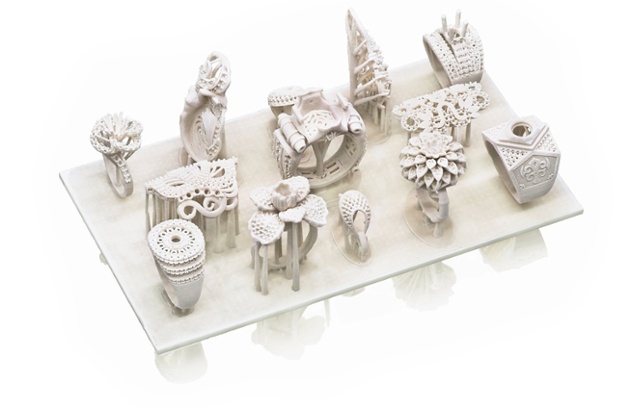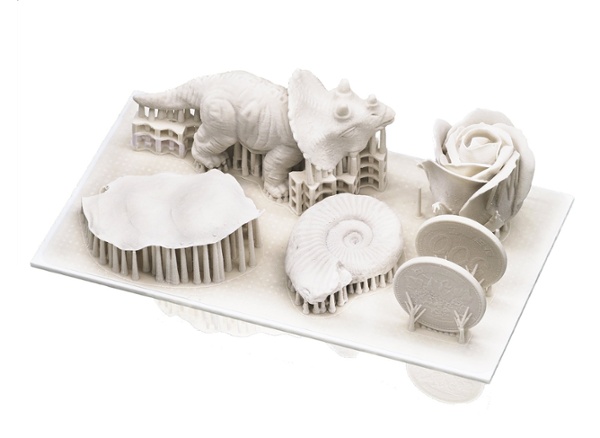Unlike our former observations of the use of ceramic within the industry, these announcements demonstrate a certain future for ceramic 3D printing.
Ackuretta unveils Advanced Ceramic Resin for 3D Printing.
The manufacturer of professional 3D printers has recently added Ceramic Resin to its Qura resin line. Professionals often apprehend to exploit ceramic parts during the production because they required an expensive industrial machinery.
Ackuretta Ceramic Resin can be exploited during the manufacturing of parts that require high resolution detail. It is capable of printing at 25-layer thickness. “Firing a 3D print made with this material produces a fully ceramic, porcelain-like finish”, said the manufacturer.
 As a reminder, the advantages of this material are its good thermal resistance, electrical insulation, and its capability to withstand wear and corrosion. Furthermore, ceramic resin can be used in a wide range of applications: within the academic environment for research projects, the military environment due to its ability to resist fire penetration and electrical conductivity, the creation of intricate designs and even architecture or art.
As a reminder, the advantages of this material are its good thermal resistance, electrical insulation, and its capability to withstand wear and corrosion. Furthermore, ceramic resin can be used in a wide range of applications: within the academic environment for research projects, the military environment due to its ability to resist fire penetration and electrical conductivity, the creation of intricate designs and even architecture or art.
Ackuretta’s material is compatible with the Ackuretta Ackuray Series and the Diplo 3D Printer.
Tethon 3D to develop desktop DLP 3D printer optimised for ceramic and metal resins
If you are a regular reader of 3D Adept, therefore, you have certainly heard about Tethon when the company launched Castalite®. The specialist of ceramic materials for 3D printing embarks on a new adventure. The manufacturer will develop and commercialise a desktop digital light processing (DLP) system that is intended for ceramic and metal materials printing.

It should be noted that the manufacturer received a grant from the Nebraska Department of Economic Development to fund the project.
Tethon 3D explained that over a dozen DLP and stereolithography (SLA) printers are compatible with its ceramic and metal resins. The only thing is that most of them are adapted for plastic polymers. Their goal now is to develop a printing system that will be fully compatible with their own materials. This way, users might benefit from increased scalability.
A new hardware division will be created within the company for this project; a division that will work in collaboration with engineers Bai Cui. PhD and Prahalada Rao, PhD from the university of Nebraska’s Department of Mechanical & Materials Engineering. Both engineers respectively hold expertise in ceramic materials for 3D printing and 3D printing hardware.
For further information, follow us on our social media and subscribe to our newsletter!
Would you like to be featured in the next issue of our digital magazine? Send us an email at contact@3dadept.com
//pagead2.googlesyndication.com/pagead/js/adsbygoogle.js
(adsbygoogle = window.adsbygoogle || []).push({});






